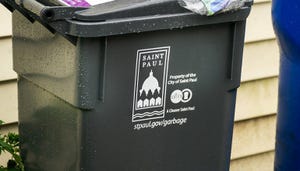A Look at the Largest Landfill Gas-To-Energy Project in Georgia
The three new plants, combined with Republic’s Hickory Ridge landfill operation, establish Republic and Mas Energy’s landfill gas-to-energy portfolio as the largest in Georgia.
Republic Services Inc. recently unveiled a new renewable energy project with partner Mas Energy LLC that will serve the Metro Atlanta area, generating 24.1 megawatts of electricity, or enough renewable energy to power 15,665 households.
“The energy will be supplied to Georgia Power for distribution throughout the local electric grid. In all likelihood, Georgia Power’s retail electric customers in Metro Atlanta will utilize the energy,” says Michael Hall, principal and chief development officer for Mas Energy based in Ponte Vedra Beach, Fla.
Their agreement, which also includes partners Georgia Power, I Squared Capital, Crowder Construction Company and Nixon Energy, is for 20 years and will convert methane captured from three local landfills at gas-to-energy facilities in the cities of Buford, Griffin and Winder. Those landfills combined have an approximate daily volume of 7,000 tons.
The three plants, combined with Republic’s Hickory Ridge landfill operation, establish Republic and Mas Energy’s landfill gas-to-energy portfolio as the largest in Georgia,” says Michael Meuse, general manager for Republic Services in Atlanta, Ga.
Landfill gas-to-energy projects like these involve capturing methane, a byproduct of the normal decomposition of waste, from the subsurface and routing the methane to a series of engines. These engines convert the methane into electricity, which can be distributed to the local power grid.
“Methane is a greenhouse gas that is naturally produced as organic waste breaks down anaerobically in landfills,” says Meuse. “Methane gas is recovered by the gas collection systems. Gas wells are driven into the waste mass and powerful blowers are used to create a vacuum to draw out and pipe the gas to the energy plant.”
The system then converts the methane gas into a clean-burning fuel.
“The power generation facility utilizes internal combustion engines fueled by the collected and treated landfill gas to produce electricity, which is then delivered to Georgia Power’s transmission and distribution system,” says Hall.
The partnership was fueled by Georgia embracing renewable and clean energy projects within state lines.
“In 2006, Georgia’s Public Service Commission established the ‘QF Proxy Unit Methodology’, whereby qualifying facilities in the state of Georgia were eligible to enter into power purchase agreements (PPA) with Georgia Power that recognized the full value of renewable and clean energy to Georgia consumers,” says Hall. “Mas Energy secured its PPA in early 2014 and brought Republic Services a proposal to build plants at Republic’s Atlanta sites.”
Republic and Mas Energy had previously collaborated on a project at Republic’s now-closed Hickory Ridge landfill site.
“Based on that positive experience, the agreements were made between Mas Energy and Republic Services to develop the (recently announced) projects,” says Hall.
Meuse says that according to the U.S. Environmental Protection Agency (EPA) calculations, energy produced from landfill gas-to-energy facilities will offset the equivalent of: carbon dioxide (CO2) emissions from 127,795,779 gallons of gasoline; carbon sequestered by 930,919 acres of U.S. forests; and carbon dioxide (CO2) emissions from 6,090 railcars’ worth of coal burned.
“Projects such as these reduce reliance on non-renewable resources (coal and natural gas), reduce methane emissions from the site, and eliminate emissions from flares previously used for gas destruction,” he says.
About the Author(s)
You May Also Like


